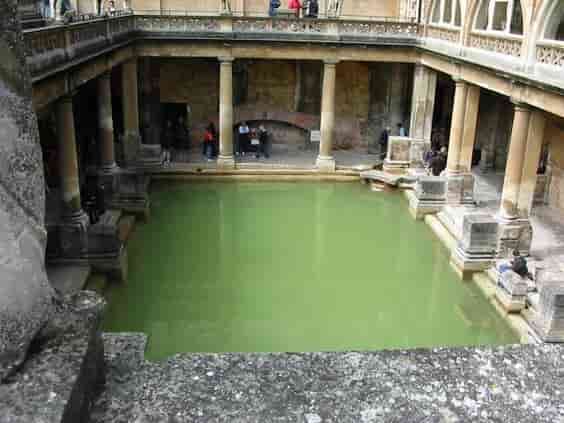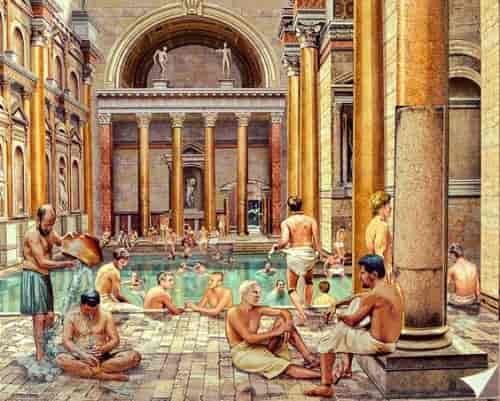An old proverb says all the habits of the Roman Empire : “The bath, the wine and Venus consume the body, but they are the real life”.
The Roman baths were one of the greatest pleasures of urban life in Antiquity, one of the main places of entertainment. Almost like a club or a mall today.
Until the middle of the 3rd century BC, spas existed only on the properties of the wealthy. In the following century, at the initiative of emperors and businessmen, public baths were built.
To enter them, you paid a small amount, when the fun was not free. The culmination of public baths was around 300, when there were almost a thousand houses of this type in Rome.
A public bath was not just a place for hygiene. The Roman baths were also frequented for the practice of sport, for cultural purposes and for health treatments.
Supplied by aqueducts, the thermal baths were composed of rooms designed to keep the water, the floor and the walls heated by the firewood of the hypocaust.
These ovens spread the heat through cavities under the floor and through ceramic tubes that went up inside hollow walls.

1. Step by step
The bather followed a kind of ritual, although the path was not rigid. First he exercised in the lecture (patio). Then, if you undressed in the apodyterium (dressing room), you went to the sudatoria for a dry bath, to the caldarium (hot bath) and to the tepidarium (warm bath) until you cool off in the frigidarium (cold bath).
2. Business and gossip
Everyone was looking for the Roman baths. There, they talked about politics, talked about business and also discussed amenities. In the bath, they could still eat, paying separately.
A menu found in the ruin of a thermal bath shows that the taste was eclectic. It contained bread, nuts, lard and sausage, among other things.
3. Men and women
There was generally no prohibition on the entry of men and women in the same spaces. Even so, each sex went to the spa at a time of day. However, women who showed up in the baths at the same time as men got a bad reputation in the city.
4. Baby skin
The heavy work was done by employees and slaves of the thermal baths, who were divided in cleaning and maintenance.
Many bathers took their own slaves to carry their utensils – and to scrub them with strigil, a curved metal scraper that served to remove dirt and oil from the body.
Read more: The final fate of the Roman gladiators







